Nov 8, 2016
 To get into the spirit this year, Brooks Applied Labs added a pumpkin carving contest to the mix of Halloween Spooktacular events and contests. The resulting festive jack-o-lanterns submitted by each laboratory department included BB-8, Momma Pumpkin, Pumpkinception, Mummy, Trumpkin, and many more. After the votes were tallied, the winning team was announced: the Quality Assurance Department with their “Jack Skellington” pumpkin. Other winners included Office Manager Sarah Clark for her Gypsy Fortune Teller costume, and Project Coordinator Anna Prestbo for her Graveyard Brownies. Good job team…way to be creative!
To get into the spirit this year, Brooks Applied Labs added a pumpkin carving contest to the mix of Halloween Spooktacular events and contests. The resulting festive jack-o-lanterns submitted by each laboratory department included BB-8, Momma Pumpkin, Pumpkinception, Mummy, Trumpkin, and many more. After the votes were tallied, the winning team was announced: the Quality Assurance Department with their “Jack Skellington” pumpkin. Other winners included Office Manager Sarah Clark for her Gypsy Fortune Teller costume, and Project Coordinator Anna Prestbo for her Graveyard Brownies. Good job team…way to be creative!
Oct 12, 2016
 The toxicity and bioavailability of selenium is dictated by the molecular form, concentration, and the capacity of an organism to metabolize the selenium in a useful manner or detoxify it. There are many parts of the world that have selenium deficiencies which necessitate augmentation of the diet with viable sources of selenium, particularly cattle feed, which is typically in the form of selenized yeast. In other circumstances, selenium is introduced in excess to the environment causing mutations and mortality in fish and birds. In both of these cases, the importance of knowing more than just the total selenium concentration is of paramount importance.
The toxicity and bioavailability of selenium is dictated by the molecular form, concentration, and the capacity of an organism to metabolize the selenium in a useful manner or detoxify it. There are many parts of the world that have selenium deficiencies which necessitate augmentation of the diet with viable sources of selenium, particularly cattle feed, which is typically in the form of selenized yeast. In other circumstances, selenium is introduced in excess to the environment causing mutations and mortality in fish and birds. In both of these cases, the importance of knowing more than just the total selenium concentration is of paramount importance.
Many assumptions can be made regarding biomolecular transformation in organisms that are later proven faulty by empirical data. Brooks Applied Labs has developed specialized, proprietary analytical methods to support the discrete quantitation of both inorganic (selenite and selenite) and organic forms of selenium (more info on our Selenium webpage). This can be especially useful for applications using biological media to remove selenium from wastewaters. Under those conditions, monitoring specific biomarkers can prove invaluable in understanding the health of bacteria colonies and causality for performance issues.
Beyond supporting selenium speciation analyses for yeast, birds, fish, and a plethora of other organisms, BAL has also partnered with a number of research scientists and pharmaceutical companies to investigate the application of selenium compounds for cancer prevention and treatment. Selenium is known to form the antioxidant analogue of glutathione, which is one reason why the number of investigations focusing on selenium treatment has increased significantly in the past decade. Whether it is a pharmacokinetics project or focused tissue bioaccumulation study, BAL has experience and knowledge to support the endeavor.
Application of our analytical methods for selenium speciation analysis of a wide variety of tissue matrices negates the need to make assumptions and ensures decisions are based on sound and defensible data. Contact us today to identify how partnering with BAL can help you meet your current and future analytical needs for research and clinical testing.
Oct 12, 2016
Some of our clients have questioned why so many separate bottles are needed for similar analyses, when it would be so much easier for their sample collection team to collect one bottle to be split by the lab upon receipt. For example, if a client wants to measure total and dissolved total mercury (THg) and methylmercury (MeHg), we would send out four fluoropolymer or glass bottles, one for each analysis. Is this overkill? Well, according the conclusions drawn from a recent paper co-authored by BAL’s VP of Operations, Annie Carter, it is not.
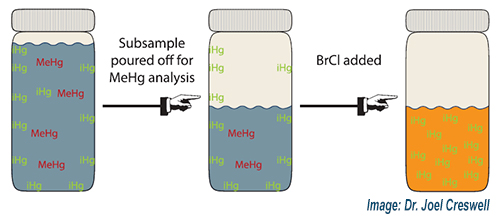
The lead author on this paper, titled Assessing bias in total mercury results after removing a subsample from the bottle, is former Brooks Rand Labs employee, Dr. Joel Creswell, who now works at the EPA. The research presented in the paper demonstrates that removing a subsample from the original bottle prior to addition of bromine monochloride (BrCl) can result in a positive bias for the THg concentration measured from the original container. The proposed mechanism for the bias is that ‘excess’ inorganic Hg adsorbs to the bottle walls, is not accounted for in the subsampled aliquot, and is then drawn into solution when BrCl is added. Collecting THg and MeHg samples in separate bottles whenever possible is recommended by the study authors. This same bias mechanism would apply if a subsample was removed from the original bottle to be filtered for dissolved Hg; therefore, collecting total and dissolved THg samples in separate bottles whenever possible is always advised by BAL scientists. Your BAL technical and project management team is ready to provide you with critical information like this prior to your next sampling event. Contact us today!
Oct 12, 2016
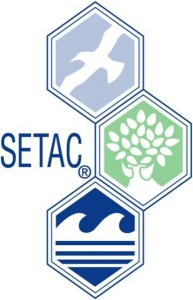 That’s right, Brooks Applied Lab staffers are making appearances at conferences all over the country next month! The week of November 6th – 10th Elizabeth Madonick and Tiffany Stilwater will be attending the Society of Environmental Toxicology and Chemistry (SETAC) World Congress and North American Annual Meeting in sunny Orlando, Florida! This is the first year that our newly merged lab will exhibiting at the SETAC Conference, and Elizabeth will be presenting the research of Jacki Aitken, a metal chemist and group leader in BAL’s Metals Speciation Group. Keep an eye out for Jacki’s poster on the Maternal transfer of metals in Steller Sea Lions (Eumetopias jubatus) from the Washington State Coast.
That’s right, Brooks Applied Lab staffers are making appearances at conferences all over the country next month! The week of November 6th – 10th Elizabeth Madonick and Tiffany Stilwater will be attending the Society of Environmental Toxicology and Chemistry (SETAC) World Congress and North American Annual Meeting in sunny Orlando, Florida! This is the first year that our newly merged lab will exhibiting at the SETAC Conference, and Elizabeth will be presenting the research of Jacki Aitken, a metal chemist and group leader in BAL’s Metals Speciation Group. Keep an eye out for Jacki’s poster on the Maternal transfer of metals in Steller Sea Lions (Eumetopias jubatus) from the Washington State Coast.
 Meanwhile Russ Gerads and Jamie Fox will be in San Antonio, Texas the same week to attend The International Water Conference. This conference focuses on the technical aspects of treatment, use, and reuse of water for industrial and engineering purposes. Please feel free to reach out to any of our staff if you or your colleagues are planning to attend either conference!
Meanwhile Russ Gerads and Jamie Fox will be in San Antonio, Texas the same week to attend The International Water Conference. This conference focuses on the technical aspects of treatment, use, and reuse of water for industrial and engineering purposes. Please feel free to reach out to any of our staff if you or your colleagues are planning to attend either conference!
Sep 14, 2016
 Collaborations with scientists at Brooks Applied Labs have yielded two new scientific publications. Through the efforts of Dr. Hakan Gürleyük, Russell Gerads, and the entire laboratory staff at BAL, research was made possible supporting two recent papers published in the journal Toxicology and Applied Pharmacology.
Collaborations with scientists at Brooks Applied Labs have yielded two new scientific publications. Through the efforts of Dr. Hakan Gürleyük, Russell Gerads, and the entire laboratory staff at BAL, research was made possible supporting two recent papers published in the journal Toxicology and Applied Pharmacology.
Health effects following subacute exposure to geogenic dusts from arsenic-rich sediment at the Nellis Dunes Recreation Area, Las Vegas, NV (DeWitt et. al., 8/1/16) describes the characterization of the toxicity of dust from these sediments, which contains a mixture of many metals and crystalline silica. View abstract and access full article
Reduction of hexavalent chromium by fasted and fed human gastric fluid. II. Ex vivo gastric reduction modeling (Kirman et. al., 9/1/16) provides insight into the reduction capacity and metabolic kinetics of hexavalent chromium in gastric fluid, which will dictate the toxicological significance of Cr(VI) ingestion. Read full article
BAL continues to collaborate with scientists around the globe in the pursuit of expanding our scientific understanding of the world around us, applying our considerable experience and knowledge to everyday projects. Check out our website or contact us to find out how we can take the uncertainty out of choosing a lab for your next project.
Sep 14, 2016
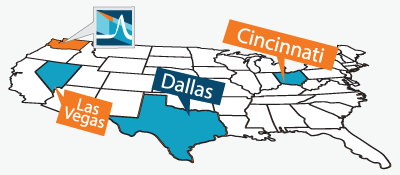 Embracing the famous words of Willie Nelson, Brooks Applied Labs is putting in the miles this late summer. Dusting off his boots, Business Development Director Russ Gerads will be attending and presenting at the AOAC Annual Meeting, held this year in Dallas September 16th-21st. This meeting offers scientific sessions, round-tables, workshops, and poster presentations to meet a variety of analytical needs, bringing our community research and technical information from the top scientists in the world. Don’t miss Russ’ talk on Organometallic Complexes of Contaminants in Cocoa, Tea, and Coffee on the 21st!
Embracing the famous words of Willie Nelson, Brooks Applied Labs is putting in the miles this late summer. Dusting off his boots, Business Development Director Russ Gerads will be attending and presenting at the AOAC Annual Meeting, held this year in Dallas September 16th-21st. This meeting offers scientific sessions, round-tables, workshops, and poster presentations to meet a variety of analytical needs, bringing our community research and technical information from the top scientists in the world. Don’t miss Russ’ talk on Organometallic Complexes of Contaminants in Cocoa, Tea, and Coffee on the 21st!
Meanwhile, Michelle Briscoe (President/CEO) and Jaime Fox (Technical Sales Manager) will be attending the US Department of Energy’s Consolidated Audit Program Analytical Service Program (DOECAP ASP) Workshop in Cincinnati September 19th-22nd. This workshop brings together DOE employees and contractors with the laboratories that provide analytical services at many of the DOE sites. Jaime will be presenting on Mercury Speciation in Tank Waste at Savannah River Site on the 22nd.
Next up, Elizabeth Madonick (Technical Sales Specialist) and Ben Wozniak (Project Manager) will be hitting the Las Vegas Strip October 5th-7th at the Supply Side West Expo. Supply Side West is the world’s largest ingredient and solutions trade show, bringing together suppliers and buyers that drive the dietary supplement, food, beverage, animal nutrition, personal care & cosmetic industries.
Please feel free to reach out to any of BAL’s road warriors!
Sep 14, 2016
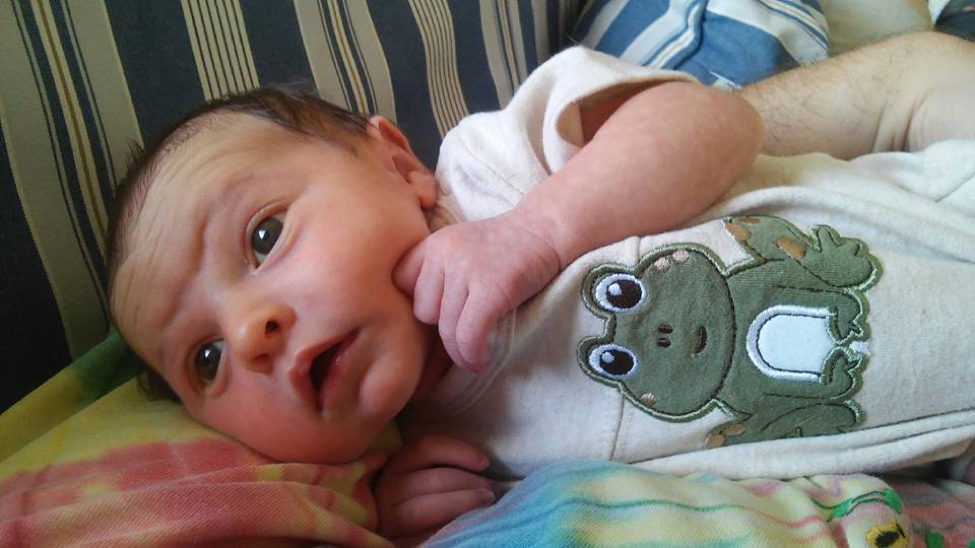 On July 12th, after 98 hours of labor, BAL Sample Control Specialist Jen Wallawine gave birth to a beautiful baby girl. Andromeda Lily Wallawine was born at 5:32 am, weighing 7 pounds, 3 ounces. She took her time in coming, but she is well worth the wait. Nicknamed Galaxy baby, she is truly out of this world. Congratulations to Jen and husband Jason on the new addition from all of us at Brooks Applied Labs!
On July 12th, after 98 hours of labor, BAL Sample Control Specialist Jen Wallawine gave birth to a beautiful baby girl. Andromeda Lily Wallawine was born at 5:32 am, weighing 7 pounds, 3 ounces. She took her time in coming, but she is well worth the wait. Nicknamed Galaxy baby, she is truly out of this world. Congratulations to Jen and husband Jason on the new addition from all of us at Brooks Applied Labs!
Aug 9, 2016
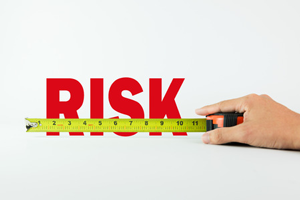 The economic impact of non-compliance for arsenic in consumptive products is a critical factor for continued market share and perception by the public for identifying product viability. Regulatory institutions and the general public have placed an increased burden on the producers of food and supplement providers to ensure their products contain an acceptably-low concentration of arsenic. Risk management is imperative for companies involved in such compliance testing and monitoring which is why collaborating with Brooks Applied Labs (BAL) is of the utmost importance. At BAL we understand that poor data quality and biased results can and will have a negative impact on your bottom line, which is why we pride ourselves on not just being the best analytical service provider in the industry, but also a solution provider and an integral part of your team to resolve issues if and when they surface.
The economic impact of non-compliance for arsenic in consumptive products is a critical factor for continued market share and perception by the public for identifying product viability. Regulatory institutions and the general public have placed an increased burden on the producers of food and supplement providers to ensure their products contain an acceptably-low concentration of arsenic. Risk management is imperative for companies involved in such compliance testing and monitoring which is why collaborating with Brooks Applied Labs (BAL) is of the utmost importance. At BAL we understand that poor data quality and biased results can and will have a negative impact on your bottom line, which is why we pride ourselves on not just being the best analytical service provider in the industry, but also a solution provider and an integral part of your team to resolve issues if and when they surface.
Arsenic in food and supplements has been an issue since the early 1900’s, but has recently come to the forefront of public attention and is an increasingly hot topic. Anthropogenic arsenic sources include industrial processes such as mining and smelting, application of industrial wastes as agricultural amendments (fly ash from coal fired power plants), contamination from its use as an agricultural pesticide, and its use in feed additives and antibiotics given to animals. Naturally occurring arsenic can also be bioavailable, leading to unsafe levels in food and supplements, especially marine plants and animals. Since the toxicity and impact of arsenic exposure is dependent on the molecular form it is in, arsenic speciation analysis of consumptive products is critical for proper risk assessment.
The cardinal rules for speciation analyses are “thou shall not induce molecular conversion during extraction” and “though shall successfully extract the analyte of interest”. The technological problem encountered by laboratories around the world is that food and supplements have such wildly variable compositions that analytical strategies using different preparatory and analytical methods are required to extract and quantify the target arsenic compounds without altering them. However, there are currently only two FDA-published methods for arsenic speciation: one for rice and rice-based products, and one for juice and juice products. The extraction and analytical methods presented by the FDA have been demonstrated to work very well for a limited list of arsenic species in these simple matrices, but the 2014 Brooks Applied Labs International Interlaboratory Comparison Study for Arsenic Speciation in Food showed extensive variability with extraction efficiencies depending on the matrix. Furthermore, the presence of non-target arsenic species in certain consumptive products can result in co-elution of arsenic species, often leading to the reporting of false positives. Thus, different matrices necessitate the application of the specific preparatory and analytical methods to mitigate bias.
Because one size does not fit all when it comes to the quantitation of various arsenic species in a wide range of matrix types, BAL applies roughly a dozen different extraction and analytical method combinations for arsenic speciation. An algorithm is used that factors in information about the specific matrix, project goals, and the target speciation parameters to ensure that the most appropriate methods for sample preparation and analysis are selected and the best possible data is generated.
Please contact us for more information about arsenic speciation today!
Aug 9, 2016
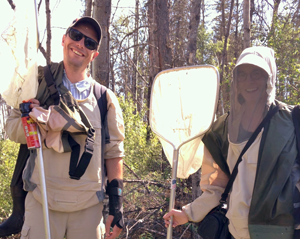 In late June, Brooks Applied Labs’ Tiffany Stilwater was lucky enough to assist with Environment and Climate Change Canada’s annual field monitoring of wetland ecosystems in Northern Alberta and the Northwest Territories. Field sampling has occurred yearly since 2012 and the data supports The Joint Canada-Alberta Implementation Plan for Oil Sands Monitoring, which assesses spatial and temporal trends of oil sands-related contaminants in the wetlands and indicator species. Pretty cool, eh?
In late June, Brooks Applied Labs’ Tiffany Stilwater was lucky enough to assist with Environment and Climate Change Canada’s annual field monitoring of wetland ecosystems in Northern Alberta and the Northwest Territories. Field sampling has occurred yearly since 2012 and the data supports The Joint Canada-Alberta Implementation Plan for Oil Sands Monitoring, which assesses spatial and temporal trends of oil sands-related contaminants in the wetlands and indicator species. Pretty cool, eh?
During her weeklong stay, Tiffany not only survived the black flies, but helped deploy DGT and SPMD units (passive samplers for metals), as well as assisted in the collection of water quality samples and wood frog specimens for contaminants analysis. Tiffany’s trip was enhanced by the company of Lukas Mundy (biologist with Environment Canada) and Dr. Danna Schock (professor/researcher with Keyano College). The opportunity to visit clients she worked with for years was priceless!
Aug 9, 2016
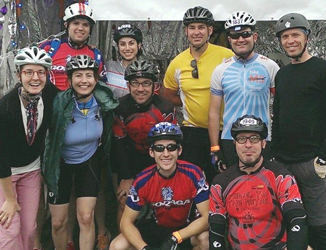 The crew from Brooks Applied Labs has participated in an annual bike ride for more than 10 years to support research that will stop disease progression, restore lost function, and support programs and services that will help the 2.3 million people affected worldwide by multiple sclerosis (MS). This ride raises over $1.8 million every year to maintain these research and support programs. MS involves an immune-mediated process in which an abnormal response of the body’s immune system is directed against the central nervous system. The Bike MS Deception Pass Classic is a two-day journey through Skagit, Whatcom, and Island Counties in Washington State. The ride has plenty of breathtaking views and supports an amazing cause. We do this to support family, friends, and coworkers that have been diagnosed with the disease. Want to ride with us this year or add your support to Team Pedal to the Metal? Join us! (be sure to type in the team name – Pedal to the Metal )
The crew from Brooks Applied Labs has participated in an annual bike ride for more than 10 years to support research that will stop disease progression, restore lost function, and support programs and services that will help the 2.3 million people affected worldwide by multiple sclerosis (MS). This ride raises over $1.8 million every year to maintain these research and support programs. MS involves an immune-mediated process in which an abnormal response of the body’s immune system is directed against the central nervous system. The Bike MS Deception Pass Classic is a two-day journey through Skagit, Whatcom, and Island Counties in Washington State. The ride has plenty of breathtaking views and supports an amazing cause. We do this to support family, friends, and coworkers that have been diagnosed with the disease. Want to ride with us this year or add your support to Team Pedal to the Metal? Join us! (be sure to type in the team name – Pedal to the Metal )
 To get into the spirit this year, Brooks Applied Labs added a pumpkin carving contest to the mix of Halloween Spooktacular events and contests. The resulting festive jack-o-lanterns submitted by each laboratory department included BB-8, Momma Pumpkin, Pumpkinception, Mummy, Trumpkin, and many more. After the votes were tallied, the winning team was announced: the Quality Assurance Department with their “Jack Skellington” pumpkin. Other winners included Office Manager Sarah Clark for her Gypsy Fortune Teller costume, and Project Coordinator Anna Prestbo for her Graveyard Brownies. Good job team…way to be creative!
To get into the spirit this year, Brooks Applied Labs added a pumpkin carving contest to the mix of Halloween Spooktacular events and contests. The resulting festive jack-o-lanterns submitted by each laboratory department included BB-8, Momma Pumpkin, Pumpkinception, Mummy, Trumpkin, and many more. After the votes were tallied, the winning team was announced: the Quality Assurance Department with their “Jack Skellington” pumpkin. Other winners included Office Manager Sarah Clark for her Gypsy Fortune Teller costume, and Project Coordinator Anna Prestbo for her Graveyard Brownies. Good job team…way to be creative!
 The toxicity and bioavailability of selenium is dictated by the molecular form, concentration, and the capacity of an organism to metabolize the selenium in a useful manner or detoxify it. There are many parts of the world that have selenium deficiencies which necessitate augmentation of the diet with viable sources of selenium, particularly cattle feed, which is typically in the form of selenized yeast. In other circumstances, selenium is introduced in excess to the environment causing mutations and mortality in fish and birds. In both of these cases, the importance of knowing more than just the total selenium concentration is of paramount importance.
The toxicity and bioavailability of selenium is dictated by the molecular form, concentration, and the capacity of an organism to metabolize the selenium in a useful manner or detoxify it. There are many parts of the world that have selenium deficiencies which necessitate augmentation of the diet with viable sources of selenium, particularly cattle feed, which is typically in the form of selenized yeast. In other circumstances, selenium is introduced in excess to the environment causing mutations and mortality in fish and birds. In both of these cases, the importance of knowing more than just the total selenium concentration is of paramount importance.


 Collaborations with scientists at Brooks Applied Labs have yielded two new scientific publications. Through the efforts of
Collaborations with scientists at Brooks Applied Labs have yielded two new scientific publications. Through the efforts of  Embracing the famous words of Willie Nelson, Brooks Applied Labs is putting in the miles this late summer. Dusting off his boots, Business Development Director Russ Gerads will be attending and presenting at the
Embracing the famous words of Willie Nelson, Brooks Applied Labs is putting in the miles this late summer. Dusting off his boots, Business Development Director Russ Gerads will be attending and presenting at the  On July 12th, after 98 hours of labor, BAL Sample Control Specialist Jen Wallawine gave birth to a beautiful baby girl. Andromeda Lily Wallawine was born at 5:32 am, weighing 7 pounds, 3 ounces. She took her time in coming, but she is well worth the wait. Nicknamed Galaxy baby, she is truly out of this world. Congratulations to Jen and husband Jason on the new addition from all of us at Brooks Applied Labs!
On July 12th, after 98 hours of labor, BAL Sample Control Specialist Jen Wallawine gave birth to a beautiful baby girl. Andromeda Lily Wallawine was born at 5:32 am, weighing 7 pounds, 3 ounces. She took her time in coming, but she is well worth the wait. Nicknamed Galaxy baby, she is truly out of this world. Congratulations to Jen and husband Jason on the new addition from all of us at Brooks Applied Labs! The economic impact of non-compliance for arsenic in consumptive products is a critical factor for continued market share and perception by the public for identifying product viability. Regulatory institutions and the general public have placed an increased burden on the producers of food and supplement providers to ensure their products contain an acceptably-low concentration of arsenic. Risk management is imperative for companies involved in such compliance testing and monitoring which is why collaborating with Brooks Applied Labs (BAL) is of the utmost importance. At BAL we understand that poor data quality and biased results can and will have a negative impact on your bottom line, which is why we pride ourselves on not just being the best analytical service provider in the industry, but also a solution provider and an integral part of your team to resolve issues if and when they surface.
The economic impact of non-compliance for arsenic in consumptive products is a critical factor for continued market share and perception by the public for identifying product viability. Regulatory institutions and the general public have placed an increased burden on the producers of food and supplement providers to ensure their products contain an acceptably-low concentration of arsenic. Risk management is imperative for companies involved in such compliance testing and monitoring which is why collaborating with Brooks Applied Labs (BAL) is of the utmost importance. At BAL we understand that poor data quality and biased results can and will have a negative impact on your bottom line, which is why we pride ourselves on not just being the best analytical service provider in the industry, but also a solution provider and an integral part of your team to resolve issues if and when they surface. In late June, Brooks Applied Labs’ Tiffany Stilwater was lucky enough to assist with Environment and Climate Change Canada’s annual field monitoring of wetland ecosystems in Northern Alberta and the Northwest Territories. Field sampling has occurred yearly since 2012 and the data supports
In late June, Brooks Applied Labs’ Tiffany Stilwater was lucky enough to assist with Environment and Climate Change Canada’s annual field monitoring of wetland ecosystems in Northern Alberta and the Northwest Territories. Field sampling has occurred yearly since 2012 and the data supports 